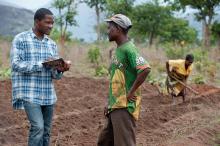Land Library
Bienvenue dans la bibliothèque du Land Portal. Explorez notre vaste collection de ressources en libre accès (plus de 74 000), comprenant des rapports, des articles scientifiques, des articles de recherche, des publications évaluées par des pairs, des documents juridiques, des vidéos et bien plus encore.
/ library resources
Showing items 1 through 9 of 22.An analysis paper by Future Directions International on livelihood considerations and food security in the Lower Mekong countries, published in May 2016.
The work of the Mekong Partnership for the Environment, and the work of
PACT, has been devoted to the role of EIA in achieving sustainable
development. Through the work of PACT and many other practitioners and
An analysis paper by Dustin Hoasa on the World Bank Group's lending practices, part 2 in Inclusive Development International (IDI)'s 'Outsourcing Development' series.
A comparative study of land rights systems in Southeast Asia and the potential of national and international legal frameworks and guidelines.
Land and associated property is a major source of individuals’ identity and livelihood.
It is widely accepted among economists and policy-makers that secure and well-defined land property rights are integral to poverty alleviation and economic prosperity. But how do legal systems, land tenure and economic development really relate to one another?
Access to land is key to achieving food security, poverty alleviation, social equity and environmental protection. A brief insight in land governance-related principles and policies of the German development assistance.
Following the end of apartheid, South Africa’s government set itself ambitious goals with a planned land reform. However, there have since been barely any changes in the country’s agricultural structure, and the positive impacts that were hoped for on rural livelihoods have hardly materialised.
Indigenous Peoples and local communities hold a large share of the world’s land area under customary systems. However, there is a tremendous gap between what is held by communities in practice and what is formally recognised by governments.





